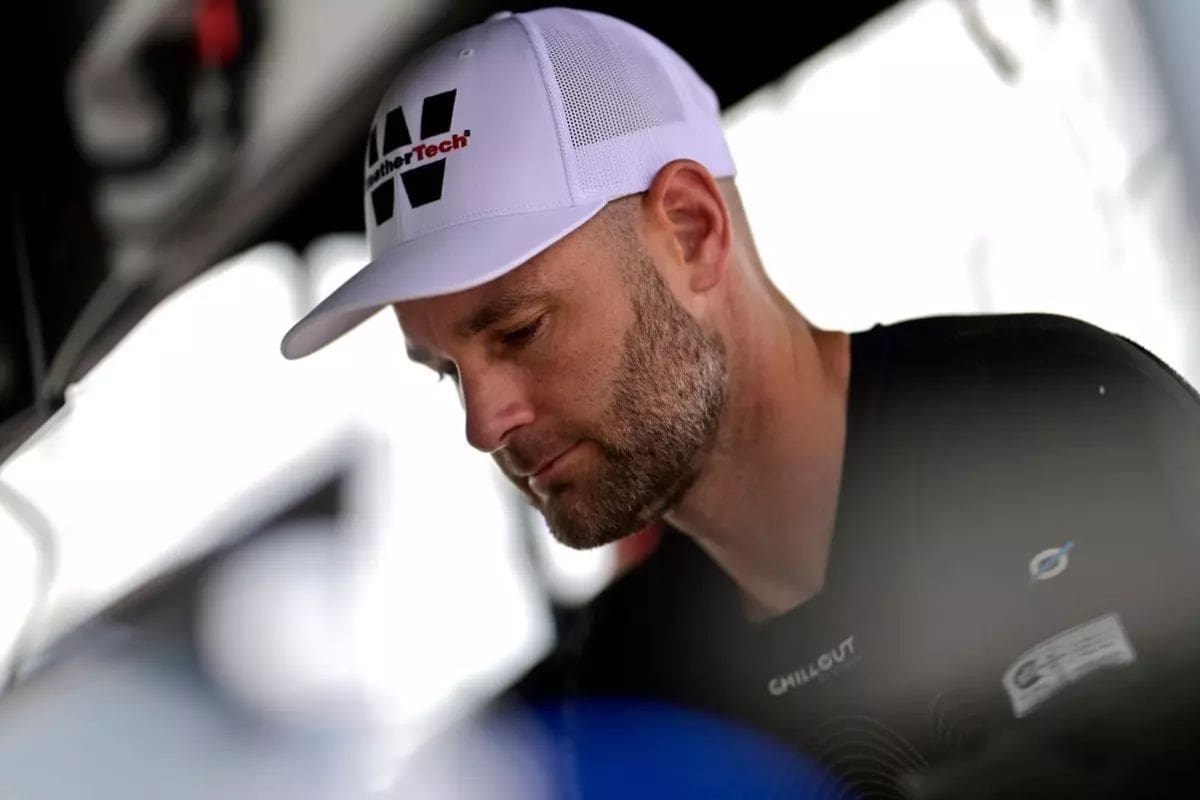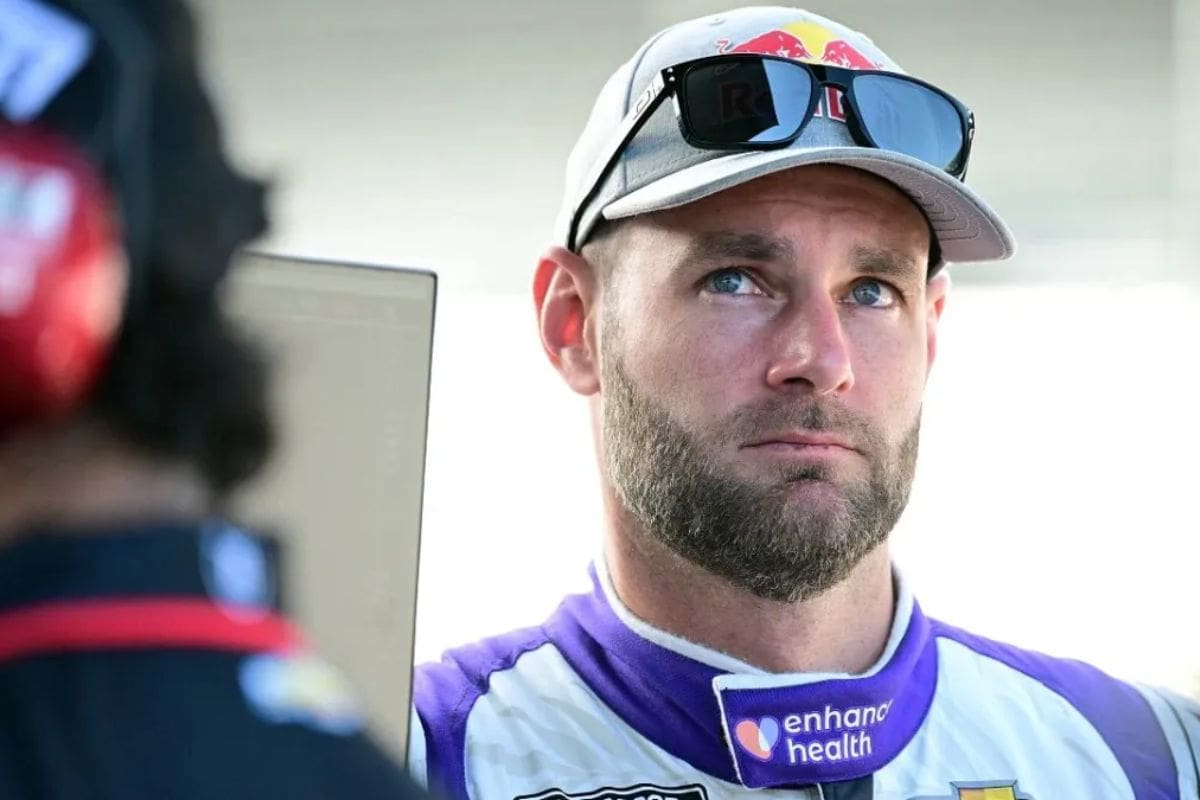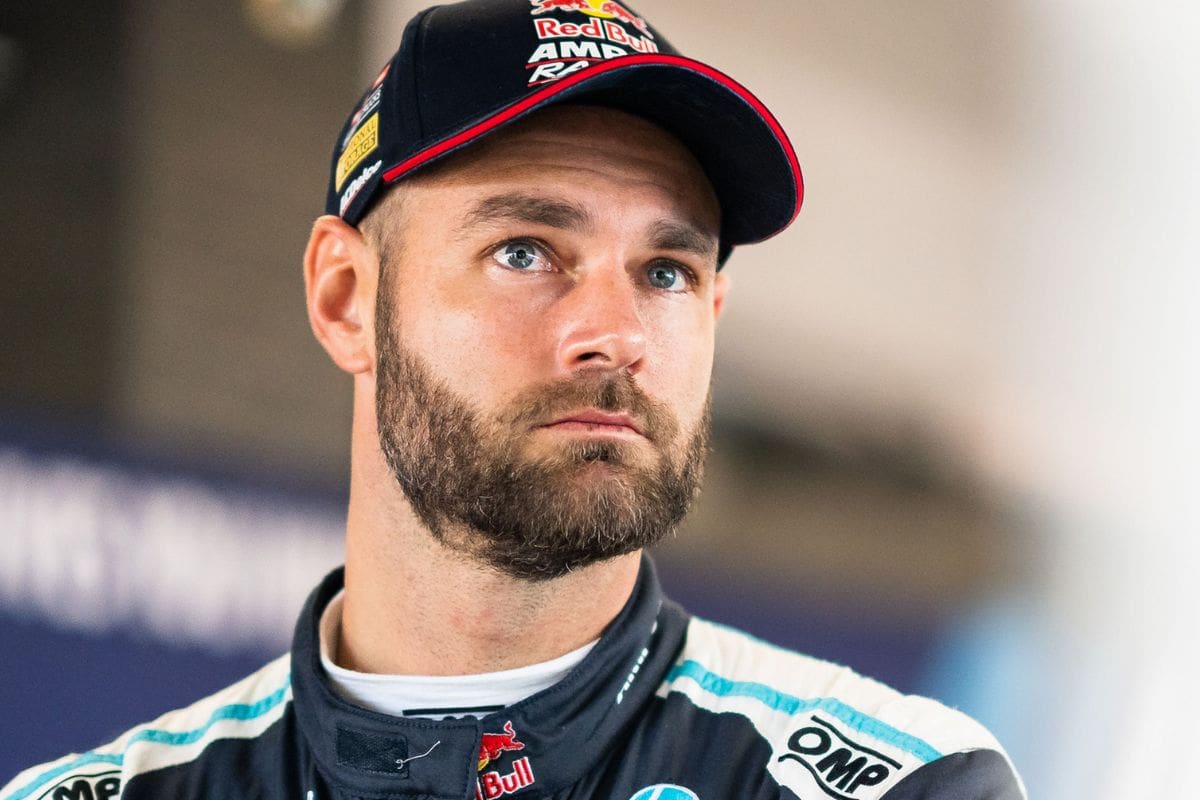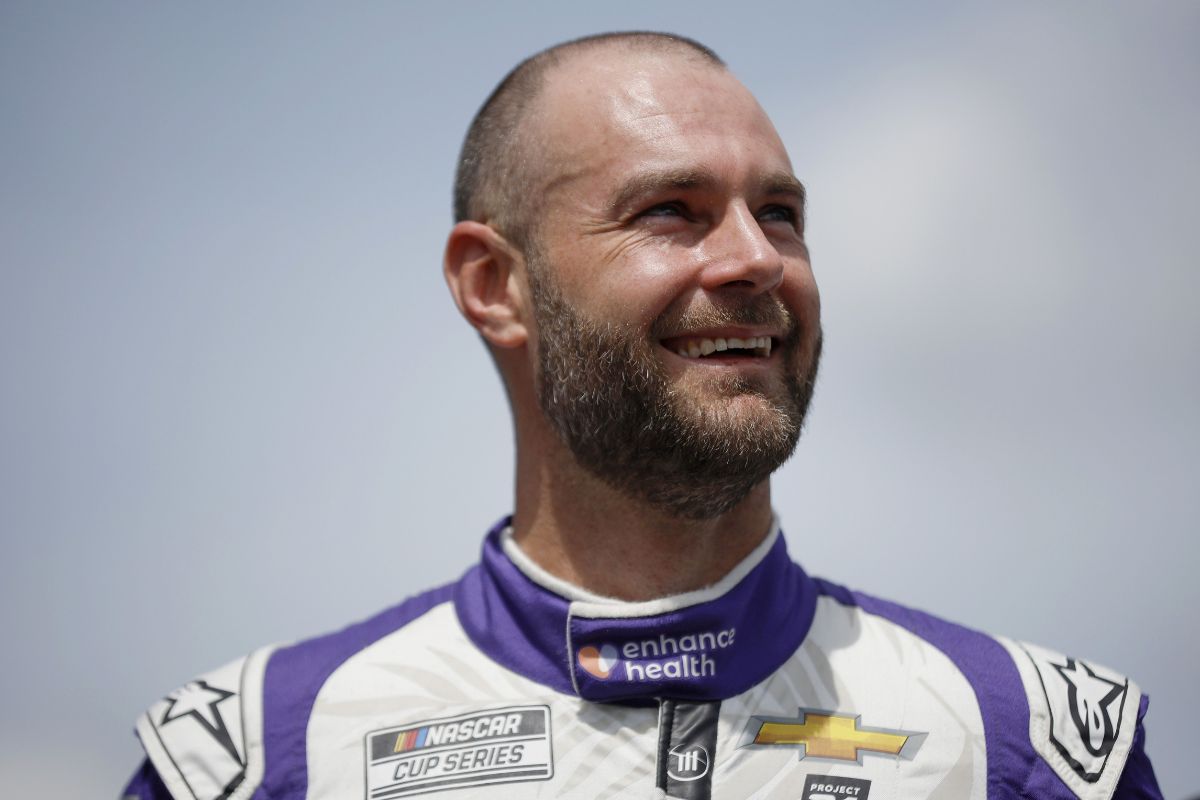Van Gisbergen Faces Last Place Finish: Shane Van Gisbergen‘s performance at the Chicago Street Course was a show of his strategic insight and driving skills, as evidenced by his Stage 1 victory. However, a collision with Chase Briscoe in the subsequent stage abruptly changed his promising start into a last-place finish. This incident emphasized the inherent unpredictability of motorsports and highlighted the crucial role of adaptability in overcoming such setbacks. Van Gisbergen’s response, marked by a mix of frustration and introspective understanding, invites a deeper exploration into the psychological and technical aspects of racing, particularly under challenging conditions. What does this imply for his upcoming races?
Key Highlights
- Van Gisbergen finished last after colliding with Chase Briscoe during the second stage of the Chicago race.
- The collision with Briscoe was due to misjudgment in wet conditions, ending Van Gisbergen’s race prematurely.
- Despite winning Stage 1, Van Gisbergen’s race ended with a 40th place finish due to the incident.
- The race was red-flagged because of intensifying rain, adding to the challenging track conditions.
- Van Gisbergen expressed deep disappointment, acknowledging the missed opportunity for a top position.
SVG’s Strong Start and Stage 1 Victory
Van Gisbergen’s performance in the opening phase at Chicago Street Course was nothing short of masterful, as he deftly navigated from his fifth starting position to claim the lead and secure a stage win under challenging circumstances. The New Zealander’s strategic skill was evident as he smoothly weaved through slower traffic, executing a remarkable three-wide move exiting the final corner to overtake Ty Gibbs. This tactical decision not only displayed his aggressive yet controlled driving style but also highlighted his sharp situational awareness and adaptability.
Coming off the momentum of his NASCAR Xfinity Series victory from pole position on Saturday, van Gisbergen was clearly riding high on confidence. His swift rise to the front of the pack on Sunday emphasized his ability to translate that confidence into tangible results. The wet conditions, which often level the playing field in motorsports, seemed to be an extra factor that van Gisbergen managed with finesse. As the rain intensified and the stage concluded under caution, his composure and car control became even more evident.
Such a performance in the initial phase wasn’t just a display of speed but a sophisticated blend of tactical insight and technical skill. It is this combination that positions drivers like van Gisbergen as formidable competitors, capable of seizing opportunities and converting them into victories. This mastery in challenging conditions not only strengthens his reputation as a defending winner but also sets a high standard for his peers.
Second Stage Incident and Early Exit
The following stage of the Chicago race took a dramatic twist when Chase Briscoe’s misjudgment in wet conditions led to a collision that ended Shane van Gisbergen’s promising run. The entire field had shifted to wet-weather tires for the start of the next part, and Van Gisbergen, positioned fifth after the pitstops, appeared well-poised to continue his strong performance. However, on the opening lap of the restart, Briscoe lost control entering Turn 6. As he locked up the tires and slide, Briscoe’s No. 14 Stewart-Haas Racing car collided with the rear of Van Gisbergen’s No. 16 Kaulig Racing Chevrolet, sending it careening into the outside wall.
The impact was severe enough to incapacitate Van Gisbergen’s vehicle, forcing an abrupt end to his race. Briscoe’s car also spun into the tire barriers following the incident, but the immediate consequence for Van Gisbergen was terminal, leading to his scoring a 40th place finish—the last position in the order. The race was subsequently red-flagged as rain intensified, further complicating the conditions.
Shane van Gisbergen is OUT OF THE RACE! 😱 @ChaseBriscoe_14 loses control and takes out defending Chicago winner @shanevg97, who had just won the opening stage. 💔
🎥 @NASCARonNBC pic.twitter.com/wFCBADj2Nt
— Motorsport.com (@Motorsport) July 7, 2024
This incident emphasizes the nature of racing in adverse weather conditions. The aquaplaning experienced by Briscoe highlights the challenges drivers face in maintaining control under such circumstances. For Van Gisbergen, the promising trajectory that began with a strong start and stage victory was abruptly curtailed, demonstrating how quickly fortunes can change in motorsport. The red-flagging of the race served as a stark reminder of the unpredictability inherent in racing, particularly when compounded by inclement weather.
SVG’s Reaction and Disappointment
Following the abrupt conclusion of the race due to the collision, Shane van Gisbergen‘s reaction highlighted his deep disappointment with the outcome. Emerging from the infield care center, the three-time Supercars champion succinctly expressed his frustration: “Yeah, nice one. So, that sucks. Unfortunate mistake by him [Briscoe]. I’m sure he didn’t mean it. But yeah, when he just nicked me, nothing I could do.”
This brief yet revealing response emphasizes a sense of inevitability and helplessness that often accompanies racing incidents. Van Gisbergen’s comments to NBC further shed light on his discontent. He acknowledged the high potential of his vehicle, crafted by the combined efforts of Kaulig and Trackhouse: “We had a really fantastic Camaro there. Kaulig and Trackhouse gave us a great car. We were able to lead and I felt like I was driving well within myself.”
“Of course I’m disappointed. We had a really amazing Camaro there. Kaulig and Trackhouse gave us a great car. We were able to lead and I felt like I was driving well within myself . So, yeah, it’s a shame to be out so early and it’s a shame we couldn’t have a proper crack at it at the end.” – svg
This statement shows his confidence in the car’s performance his frustration that such readiness and capability were nullified by an unexpected incident. His disappointment is particularly evident when he mentions the missed opportunity for a ‘proper shot at it at the end,’ indicating a strong belief in his potential to compete for a top position. Van Gisbergen’s reaction encapsulates the emotional rollercoaster inherent in motorsport; the fine line between success and catastrophe is often determined by factors beyond a driver’s control.
Assessment of Competitors and Track Conditions
Amidst the challenging race conditions, Shane van Gisbergen offered a straightforward evaluation of his rivals and the evolving track dynamics. He specifically highlighted Ty Gibbs, Christopher Bell, and Kyle Larson as the frontrunners to watch, praising their skill and the respectful nature of their on-track battles. Van Gisbergen’s acknowledgment of their capabilities highlights not only his sportsmanship but also the competitive equality within the field, suggesting a high level of mutual respect among the top drivers.
“Well, we had some really cool battles with them and and respectful. Really fair. So yeah, any of the top three I think are the favorite.” – svg
The track conditions, described as unstable, played a significant role in shaping the race. The event began with a partially damp track, compelling most drivers to choose slick tires. However, the weather’s unpredictable nature soon shifted the track to full wet conditions by the end of the initial stage, requiring a strategic pivot. Van Gisbergen noted the precariousness of leading under such conditions, where the uncertainty of grip and potential hazards forced leaders to decelerate cautiously. This dynamic added a layer of complexity to the race, emphasizing the importance of adaptability and split-second decision-making.
Gutted pic.twitter.com/DNuOQzELH5
— Shane van Gisbergen (@shanevg97) July 7, 2024
Van Gisbergen’s insights reveal the inherent unpredictability of racing under fluctuating weather conditions. His commentary on the shift from slick to wet tires illustrates the delicate balance drivers must maintain between aggression and caution. The need for constant vigilance and adaptability was evident, particularly for those at the front, who bore the brunt of uncovering the track’s changing limits. Despite the eventual crash, van Gisbergen’s reflections provide a compelling peek into the strategic intricacies and competitive spirit that define high-stakes racing.
Summary and Reflection
Reflecting on the race, van Gisbergen’s experience in Chicago highlights the relentless unpredictability and strategic complexity inherent in motorsport. The incident with Chase Briscoe, which ultimately led to van Gisbergen’s last-place finish, emphasizes the fine margins that separate victory from disaster in this high-stakes environment. Despite leading and winning Stage 1, a combination of challenging track conditions and intense competition dictated a harsh outcome.
“It was fine,” van Gisbergen said .”But on slicks it got a bit dodgy and I hated being the leader. Whoever was the leader, you could see them slowing up not sure what the conditions would be. As soon as I got to the front you always unsure of what’s happening and I had to take it a bit easy so yeah. But, I had a lot of fun … until then.”
Van Gisbergen’s acknowledgment of the competitive nature of the race provides insight into the mindset of a seasoned driver. The ability to manage both success and adversity is a testament to his professionalism. His reflection on the event also highlights the critical role that evolving weather conditions played, demanding continual adaptability and strategic recalibration from all participants.
Moving forward, van Gisbergen’s focus on upcoming races reflects a forward-thinking approach, vital for maintaining a competitive edge in the sport. His admiration for the competitors who remained in contention despite the adverse conditions is indicative of the camaraderie and respect that defines professional racing. Ultimately, this race serves as a valuable learning experience, reinforcing the importance of resilience and strategic foresight in motorsport.
News in Brief: Van Gisbergen Faces Last Place Finish
Van Gisbergen’s performance in Chicago highlights the inherent volatility of motorsport. Despite a commendable start and a strategic Stage 1 victory, a collision in the following stage resulted in an early exit and a bottom-place finish.
This result emphasizes the unpredictable nature of racing and the critical need for adaptability. The incident serves as a reminder of the fine margins that separate success from disappointment in competitive racing environments.
ALSO READ: Shane Van Gisbergen Claims The Loop 110 Pole at NASCAR Chicago




